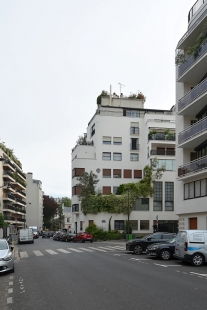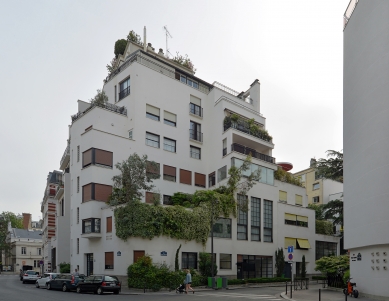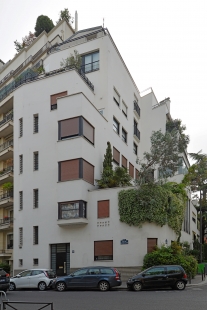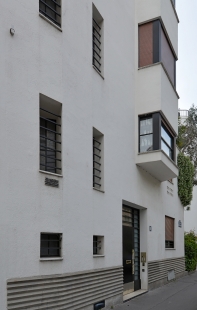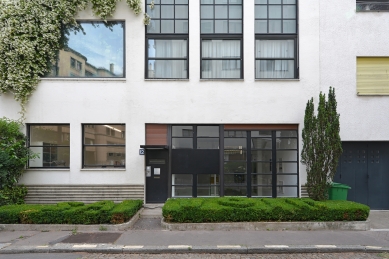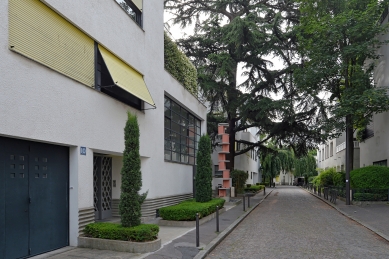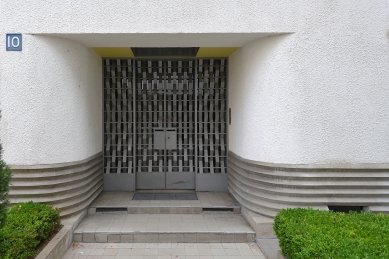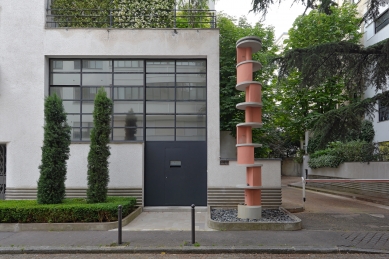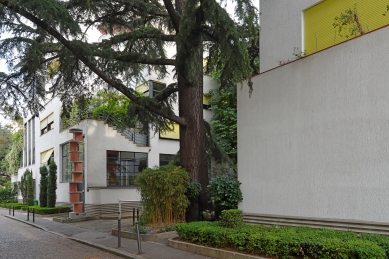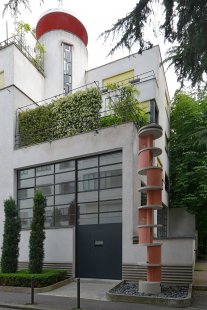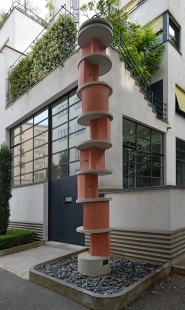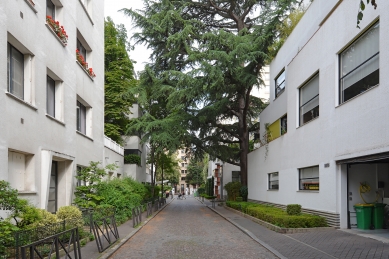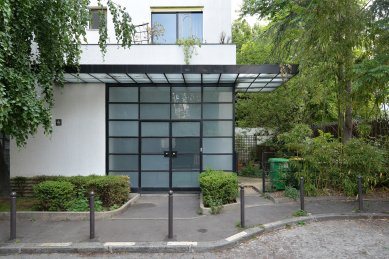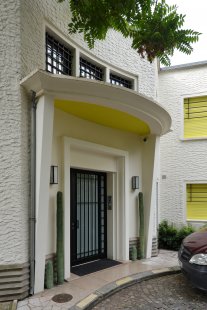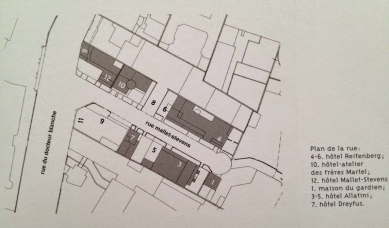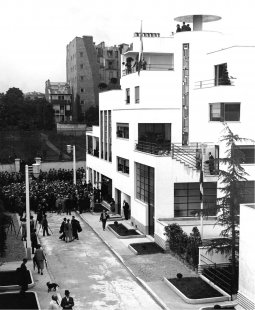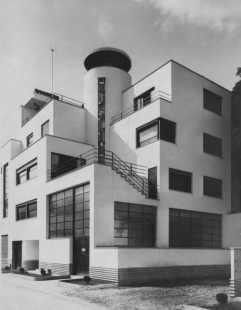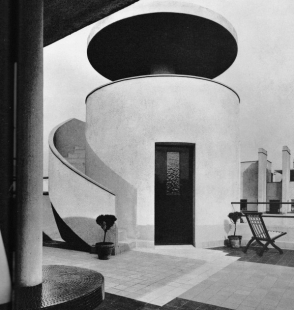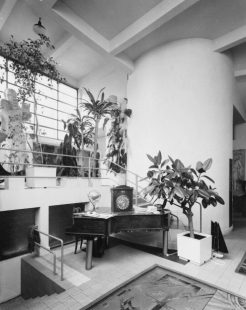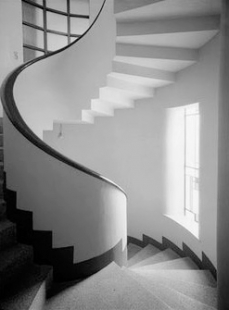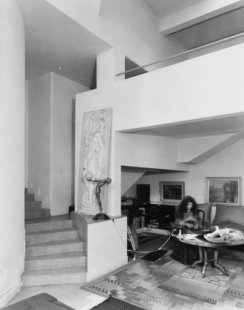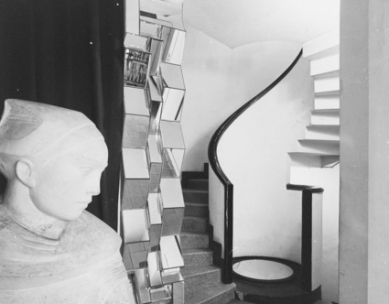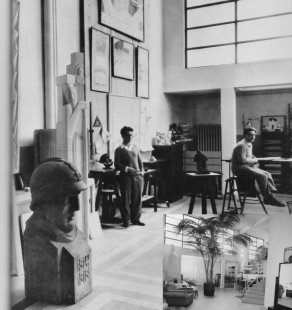
Street Mallet-Stevens

In the 16th arrondissement of Paris, there is a street named after the architect Robert Mallet-Stevens, who is the author of most buildings in this 7-meter-wide and 77-meter-long thoroughfare. The short cul-de-sac in the d'Auteuil district was ceremonially opened on July 20, 1927, by the Minister of Trade, Industry, and Aviation, Maurice Bokanowski. Functionalist structures made of reinforced concrete were built during a brief period in the mid-1920s. A typologically diverse mix includes villas, residential buildings, and a sculptor's studio. The varied development with a number of protruding bay windows and set-back roof terraces ensures that each of the houses and apartments is unique.
Mallet-Stevens received the commission from banker Daniel Dreyfus, for whom he renovated the Hôtel des Roches Noires in Calvados on the northern coast of France in 1924. Dreyfus had a plot of land behind his Parisian home at 71 Rue de l’Assomption, covering an area of 3827 m² extending to Rue du Dr. Blanche. The 35.7-meter-wide plot could be divided so that a seven-meter-wide road ran through the middle, with sidewalks and buildings on both sides.
In addition to Dreyfus and Mallet-Stevens, the plot was shared among artists: sculptors Jean and Joël Martel, filmmaker Hélène Allatini, and pianist Helena Reifenberg. Dreyfus owned the house numbered 7, where Élisabeth de Gramont, a relative of Eileen Gray, later lived.
In house number 1 lived the caretaker and gardener who took care of the entire estate. This building was expanded between 1951-53 by architect Roger Gonthier. The owner of villa Allatini at 3-5 was arrested by the Gestapo in October 1942, and her house was transformed into a prison with torture chambers. In villa number 4-6 lived Helena Reifenberg, widow of industrialist Hugo Reifenberg. House number 10 was the sculptor's studio of brothers Joël and Jon Martel, whose residence was listed as a historic monument in 1990. The sculpture at the entrance to the studio was installed in 2007 by art dealer Éric Touchaleaume. The largest corner house, number 12, was owned by Robert Mallet-Stevens, who spent 12 years here and operated his architectural practice. Mallet-Stevens also planned to develop plots 9-11, which ultimately did not happen.
Mallet-Stevens received the commission from banker Daniel Dreyfus, for whom he renovated the Hôtel des Roches Noires in Calvados on the northern coast of France in 1924. Dreyfus had a plot of land behind his Parisian home at 71 Rue de l’Assomption, covering an area of 3827 m² extending to Rue du Dr. Blanche. The 35.7-meter-wide plot could be divided so that a seven-meter-wide road ran through the middle, with sidewalks and buildings on both sides.
In addition to Dreyfus and Mallet-Stevens, the plot was shared among artists: sculptors Jean and Joël Martel, filmmaker Hélène Allatini, and pianist Helena Reifenberg. Dreyfus owned the house numbered 7, where Élisabeth de Gramont, a relative of Eileen Gray, later lived.
In house number 1 lived the caretaker and gardener who took care of the entire estate. This building was expanded between 1951-53 by architect Roger Gonthier. The owner of villa Allatini at 3-5 was arrested by the Gestapo in October 1942, and her house was transformed into a prison with torture chambers. In villa number 4-6 lived Helena Reifenberg, widow of industrialist Hugo Reifenberg. House number 10 was the sculptor's studio of brothers Joël and Jon Martel, whose residence was listed as a historic monument in 1990. The sculpture at the entrance to the studio was installed in 2007 by art dealer Éric Touchaleaume. The largest corner house, number 12, was owned by Robert Mallet-Stevens, who spent 12 years here and operated his architectural practice. Mallet-Stevens also planned to develop plots 9-11, which ultimately did not happen.
The English translation is powered by AI tool. Switch to Czech to view the original text source.
1 comment
add comment
Subject
Author
Date
Jo
Bohdan
03.10.21 12:52
show all comments


